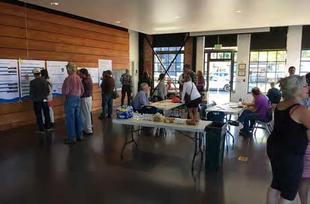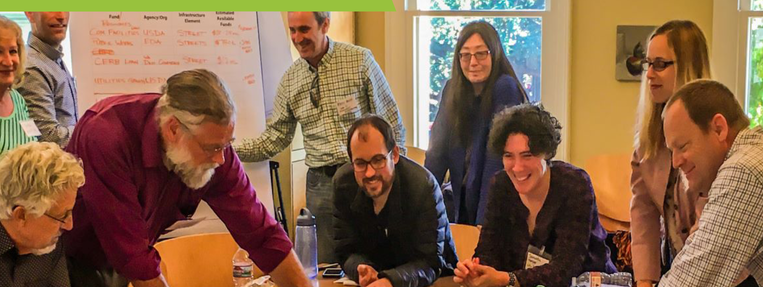Land Use Planning Made Successful With Community Engagement
AHBL’s land use planners place a strong emphasis on engaging the public and gathering community insight. Guided by a strong belief that every community has its own valuable and unique characteristics, AHBL planners tailor each community outreach strategy to help gather community needs and preferences directly from the community members themselves.
AHBL’s planning team makes the opportunity to engage in the process equitable and accessible by providing several ways to receive input from the public. Breaking out of the traditional models of community engagement which has included town halls and physical surveys, our planners offer virtual town halls that coincide with in-person meetings, text messaging campaigns to receive community input, and bringing interactive feedback tools to local community events.
AHBL Planning Project Manager, Brittany Port said, “We follow several best practices regarding community engagement. Figuring out how each community is best engaged is one of them. While many communities are familiar with open houses, we also have found community members who might not have been able to attend in-person discussions would post relevant remarks on Nextdoor, a social app that has gained popularity in the last few years. As an experienced planning team, we have been intentional in reaching out to communities through the methods they interact with most in order to communicate clearly about our process and plans.”
Bridging the gap between the planning process and communities is not without its complications. Planning is often a long-range process that projects 5 to 20 years in the future. Long-range planning takes time to implement among communities; tangible results are not always immediate. “We are aware that plans take time to be implemented. That’s why we are intentional about being responsive to people’s concerns,” said Port. “We are careful to track community comments and communicate why things do or don’t get done. It’s important that community members are heard.” 
A recent AHBL long-range subarea plan located in Port Townsend, Washington, demonstrates how the team incorporates community feedback into their planning solutions. The goal of this project was to establish a regulatory framework for redevelopment along a major throughway and the abutting neighborhoods. The subarea plan was meant to provide guidelines for urban design, character, and future uses for the neighborhoods.
The challenge AHBL’s land use planners encountered was balancing community needs, private property owner needs, and highly specified building use regulations. Community feedback relayed the desire for an urban look and feel in their community. Private property owners were concerned with how they might develop their properties with uses that are often more nuanced than the traditional zoning code allows. In order to come to a solution that worked for all, a form-based code that requires buildings to achieve a pre-described aesthetic but can have a variety of uses ranging from wineries to wooden boat restoration was adopted.
“This project solution felt like a big win, and it was all due to involvement from the public. The community, including the private property owners, were all very engaged,” said Port. “I have met numerous community members that bring invaluable insight into the history and challenges their community has experienced. As planners, we (AHBL) listen openly to these stories to find project solutions that work for their needs.” When the community is involved, successful plans are the result. With experience in engaging youth, seniors, and marginalized communities, AHBL is dedicated to providing a meaningful engagement experience in the planning process.
